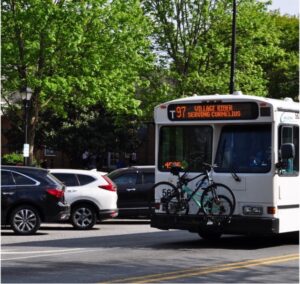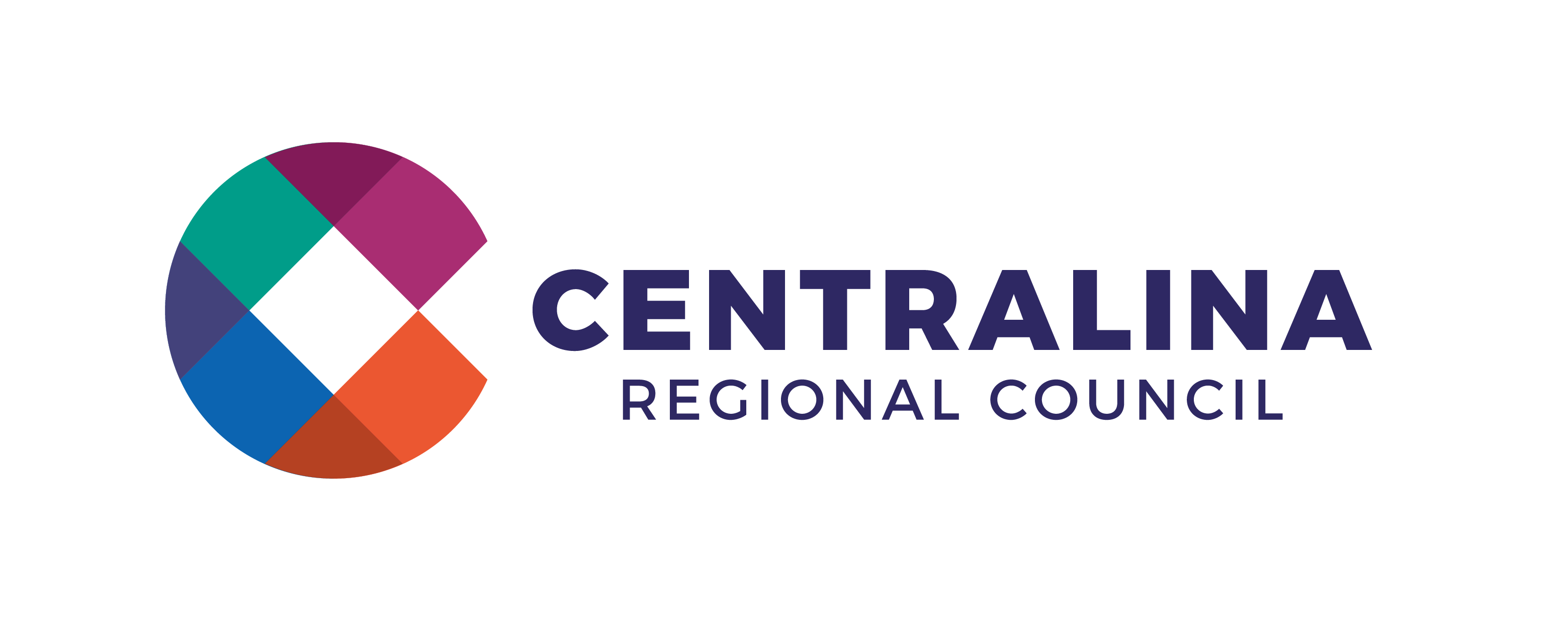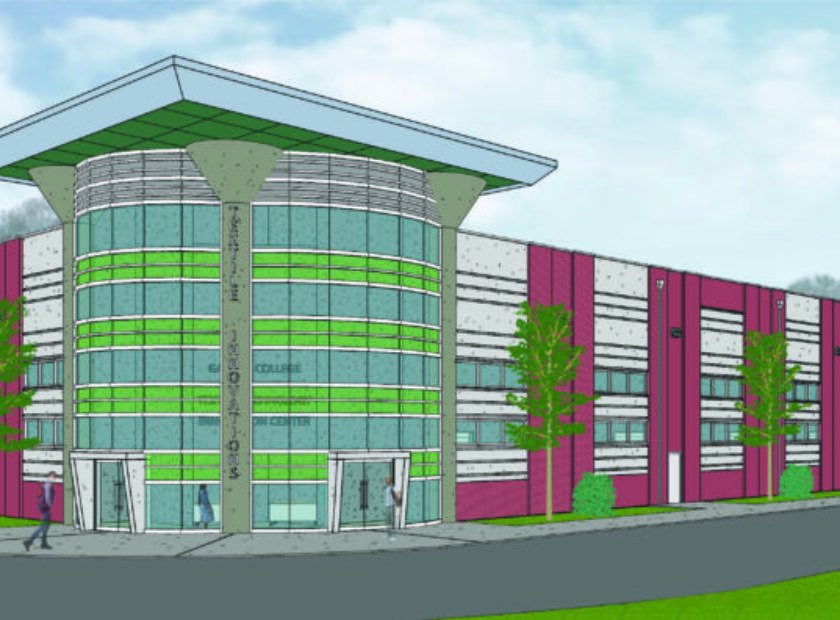Transportation choice – the ability to select from a variety of transportation modes to meet one’s daily needs – is critical to ensuring a high quality of life, access to opportunities and economic vitality. Transportation choices, which encompass everything from driving a private vehicle to riding a bicycle to taking public transportation and beyond, are also a defining characteristic of a well-connected multi-modal transportation network. In the Charlotte region and in many regions throughout the country, there are limited transportation choices available to residents and visitors, with most individuals overwhelmingly relying on private vehicles. How can areas like the greater Charlotte region enhance connectivity and accessibility through expanded transportation choices without breaking the bank on infrastructure investments? Transportation Demand Management (TDM) is one proven strategy for addressing such issues.
What is TDM?
 TDM refers to a program of education and incentives that are meant to complement existing transportation infrastructure to allow travelers to better understand the choices available to them. Most TDM programs aim to grow non-vehicle modes of travel and reduce the number of trips made in private vehicles (often referred to as single-occupancy vehicle, or SOV, trips) to help curb traffic congestion, promote healthy lifestyles and improve air quality. TDM strategies are cost-effective, focusing on how people make decisions about how they travel and helping people capitalize on existing transportation infrastructure through opportunities like shared mobility, walking, biking and telecommuting. A TDM-based approach to planning also encourages best practices like complete streets and walkable activity centers, creating more balanced and multi-modal transportation networks.
TDM refers to a program of education and incentives that are meant to complement existing transportation infrastructure to allow travelers to better understand the choices available to them. Most TDM programs aim to grow non-vehicle modes of travel and reduce the number of trips made in private vehicles (often referred to as single-occupancy vehicle, or SOV, trips) to help curb traffic congestion, promote healthy lifestyles and improve air quality. TDM strategies are cost-effective, focusing on how people make decisions about how they travel and helping people capitalize on existing transportation infrastructure through opportunities like shared mobility, walking, biking and telecommuting. A TDM-based approach to planning also encourages best practices like complete streets and walkable activity centers, creating more balanced and multi-modal transportation networks.
Effective TDM programs rely heavily on collaboration across disciplines, sectors, jurisdictions and interests to reduce the number of local and regional private vehicle trips. For example, many TDM efforts focus specifically on commute trips and involve collaboration with major employers and employment centers to help commuters recognize the range of transportation options available. Example TDM strategies can include (and are not limited to):
 Providing vanpools or other shared ride services to employees
Providing vanpools or other shared ride services to employees- Incentivizing commuters to ride transit or a bicycle to work
- Disincentivizing driving by limiting parking or offering telecommuting options
- Shifting driving trips away from peak traffic hours through flexible scheduling
- Leveraging ordinances or development conditions to enhance active transportation infrastructure
Recently, TDM has come into increasing favor across the United States. Planners have realized it is much more cost-effective to proactively and comprehensively manage demand for transportation than it is to increase the capacity of the existing network. Successful TDM programs provide significant returns on investment for corporations, government agencies and consumers. For example, an increase in active transportation could yield an estimated annual benefit of $10 to $66 billion for the United States. These programs provide shorter trips, more options, reduced travel delays and benefits to business and society. Active transportation projects have also been found to create more jobs than those focused on private vehicles – 11 to 14 jobs are created for every $1 million spent on bicycle and pedestrian projects, while only seven jobs are created for every $1 million spent on highway projects.
TDM strategies can also expand accessibility and autonomy for rural areas where residents are usually dependent on private vehicles for their transportation needs. Improving transportation choice in rural and suburban communities helps ensure non-drivers can access services and amenities critical to their daily lives and stay connected to their communities. While TDM strategies for urban areas often focus on changing travelers’ behaviors and attitudes around alternative modes of transportation, strategies for suburban and rural areas typically focus on increasing the mobility choices available to travelers and easing the convenience of transitioning between different modes. By integrating TDM into placemaking and planning, rural and suburban areas can even leverage TDM strategies to promote community livability and preserve unique features of the community or its environment.
TDM in North Carolina

TDM programs are already operating across North Carolina. In the Outer Banks, a $6.7 million investment over 10 years in bicycle infrastructure resulted in $60 million annually in revenue from nearly 700,000 visiting bicyclists each year (NCDOT). Currently, NCDOT funds five local and regional TDM programs statewide through partnerships with Land of Sky Regional Council, Charlotte Area Transit System (CATS), City of Wilmington (GoCoast), Piedmont Authority for Regional Transit (PART) and Triangle Transportation Choices (TJCOG).
Triangle Transportation Choices is a TDM program in the seven-county Triangle region of the state of North Carolina and was established in 2008. The TJCOG program links NC state policy and funding with local and regional service providers. GoTriangle, one of the program’s service providers, offers a variety of programs and incentives to expand transportation choices, including an incentive program called “GoPerks”. The incentive program offers gift cards from locally-owned businesses to residents who try out a mode of transportation other than driving alone. In FY21, the GoPerks program supported over 50 small businesses in the community, boosting the local economy and expanding residents’ awareness of diverse transportation options simultaneously. Other major accomplishments of the collaboration between Go Triangle and Triangle Transportation Choices include the following:
- 4.2 million vehicle trips avoided
- 2.2 million gallons of gas saved
- 40,600 alternative transportation users supported
- 44 million pounds of carbon dioxide (CO2) release prevented
TDM: A Practical Solution for the Greater Charlotte Region
TDM is a cost-effective, common sense approach to transportation that can encourage our region’s residents and visitors to make the best possible use of the varied mobility options available in our region – and wide support exists for a regional TDM program in the greater Charlotte region. Through the CONNECT Beyond engagement process, consensus emerged among transportation stakeholders across the 12-county planning area that a truly regional approach to TDM implementation is needed to achieve the connected, accessible mobility system envisioned for our region’s future. While TDM strategies have been pursued in the Charlotte-Mecklenburg area, additional support is needed to develop suburban- and rural-friendly TDM approaches that meet the mobility needs of all residents and communities. Centralina Regional Council is partnering with NCDOT and transportation agencies across the region to tackle this challenge and will launch a process to develop a regional TDM plan in early 2023. The plan will outline strategies for expanding mobility choices, approaches to changing travel behavior and measurable program outcomes to ensure a TDM program reduces traffic congestion and travel times, improves public health and provides cost savings and other economic benefits to move our region forward.
Learn More
Interested in learning more about TDM for the greater Charlotte region, TDM-related recommendations in the CONNECT Beyond plan and other foundational planning efforts and realistic TDM strategies you can implement in your own communities? Register now to join Centralina Regional Council on Tuesday, December 6 for our next Centralina Learns training session on TDM. Hear from local and state-level experts about TDM implementation in North Carolina and beyond!



